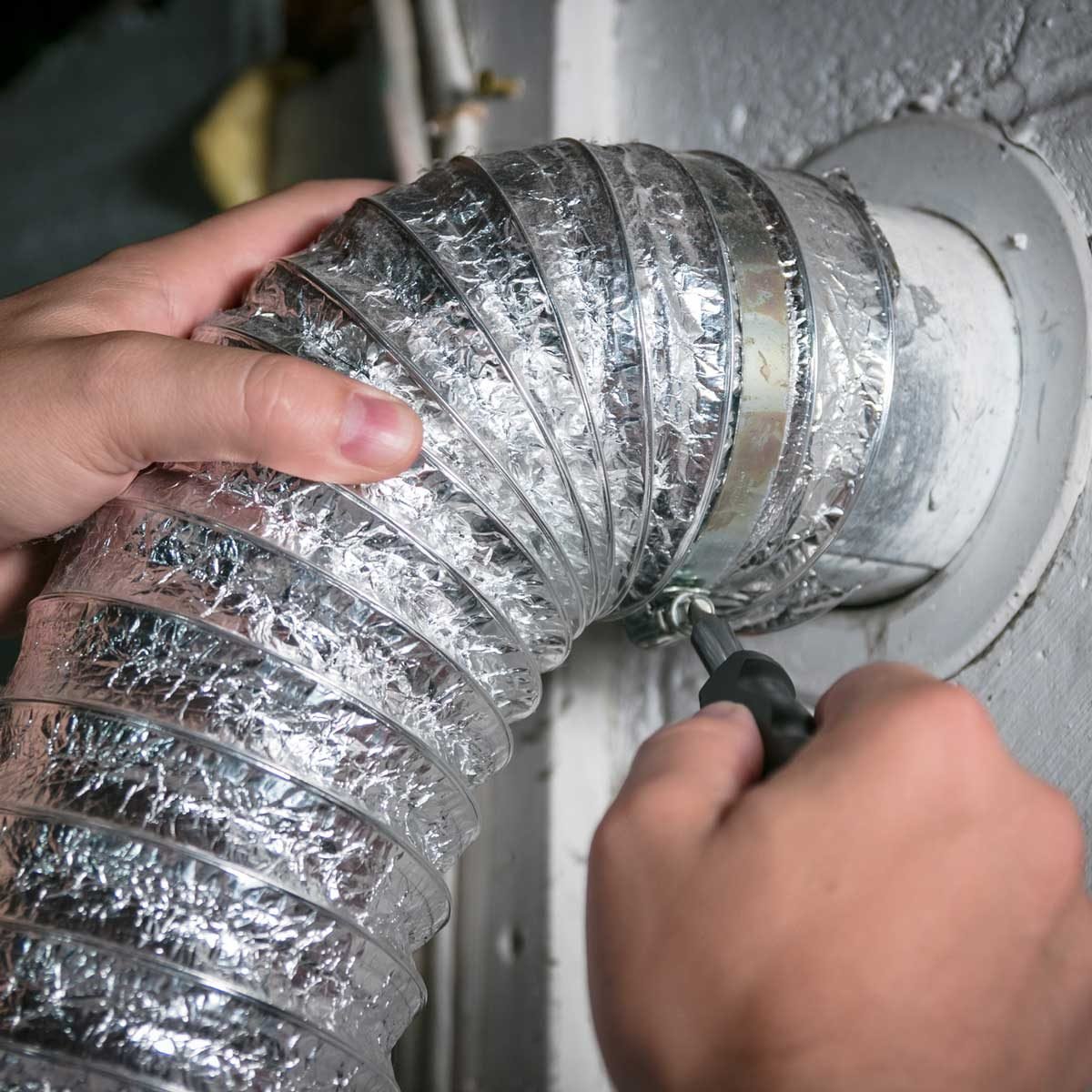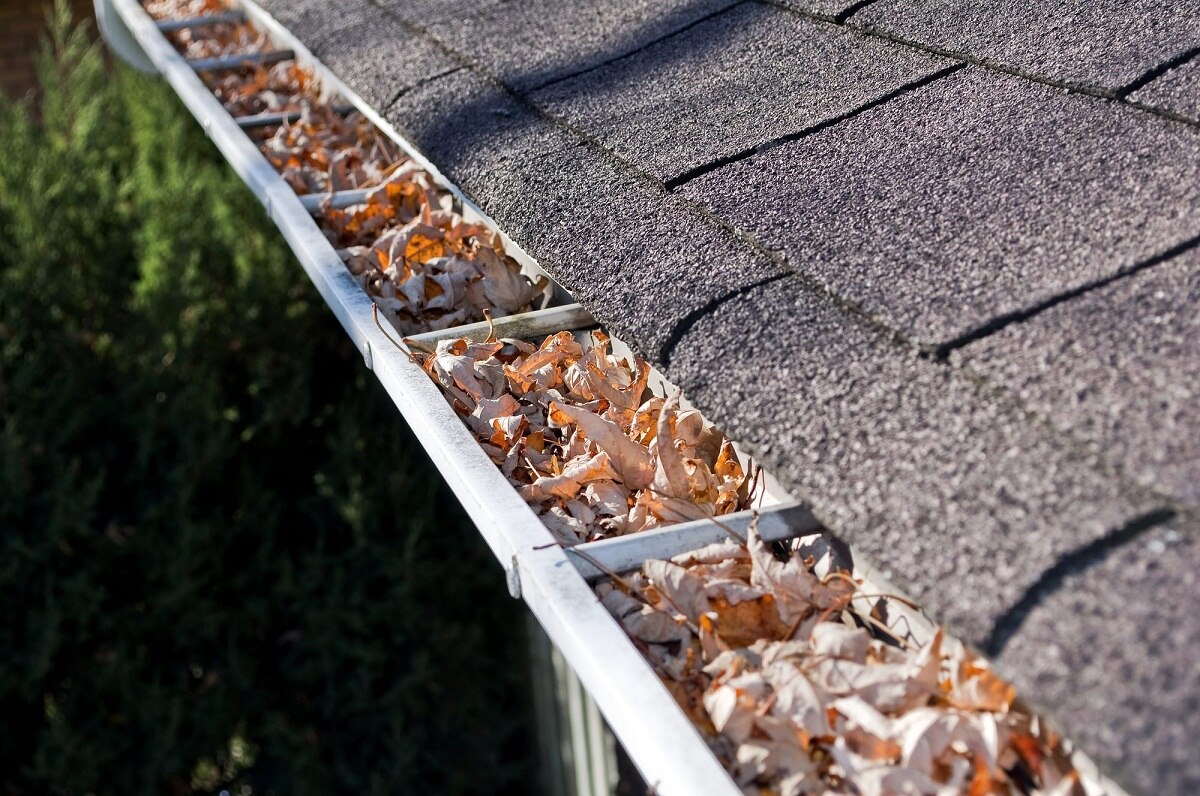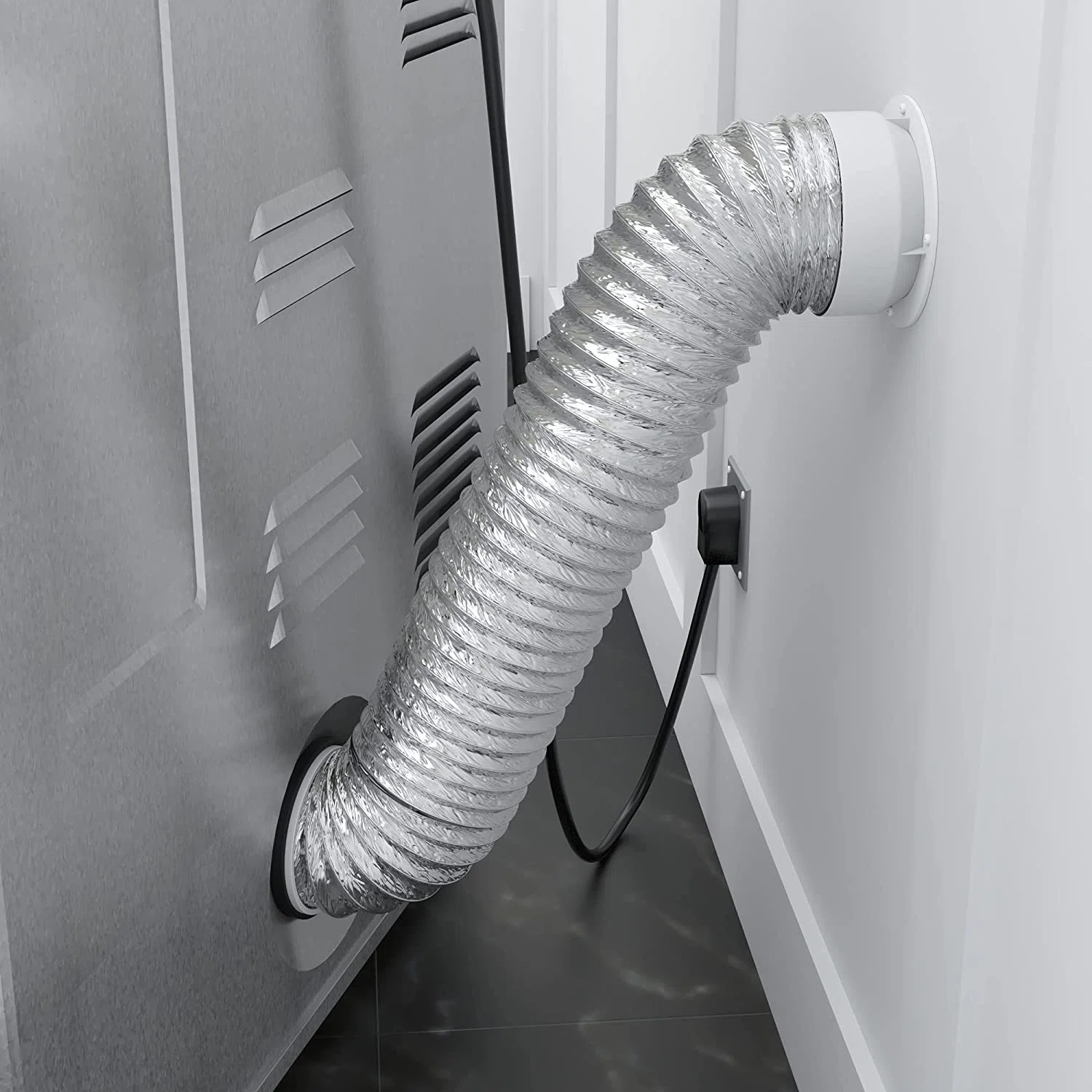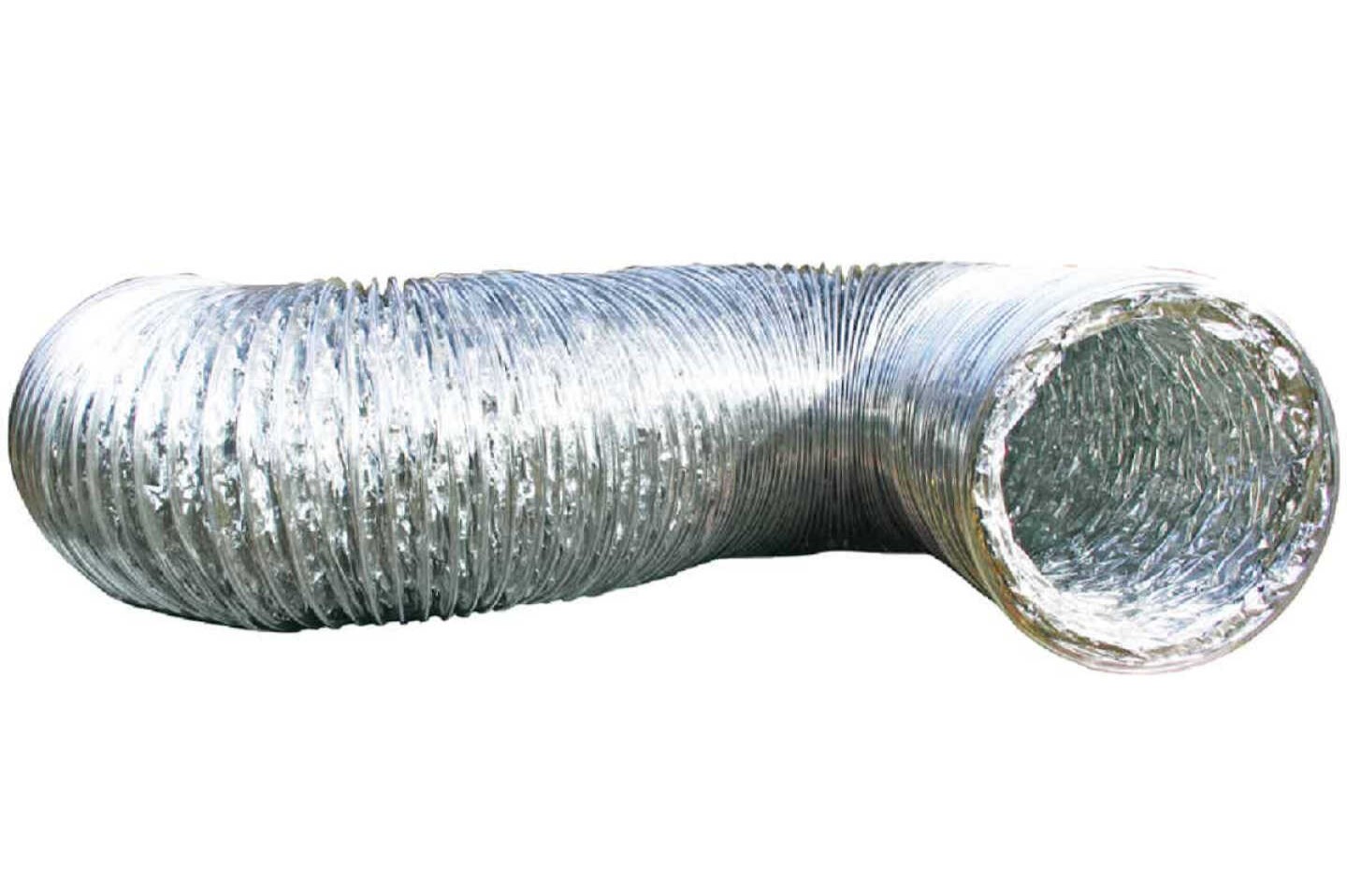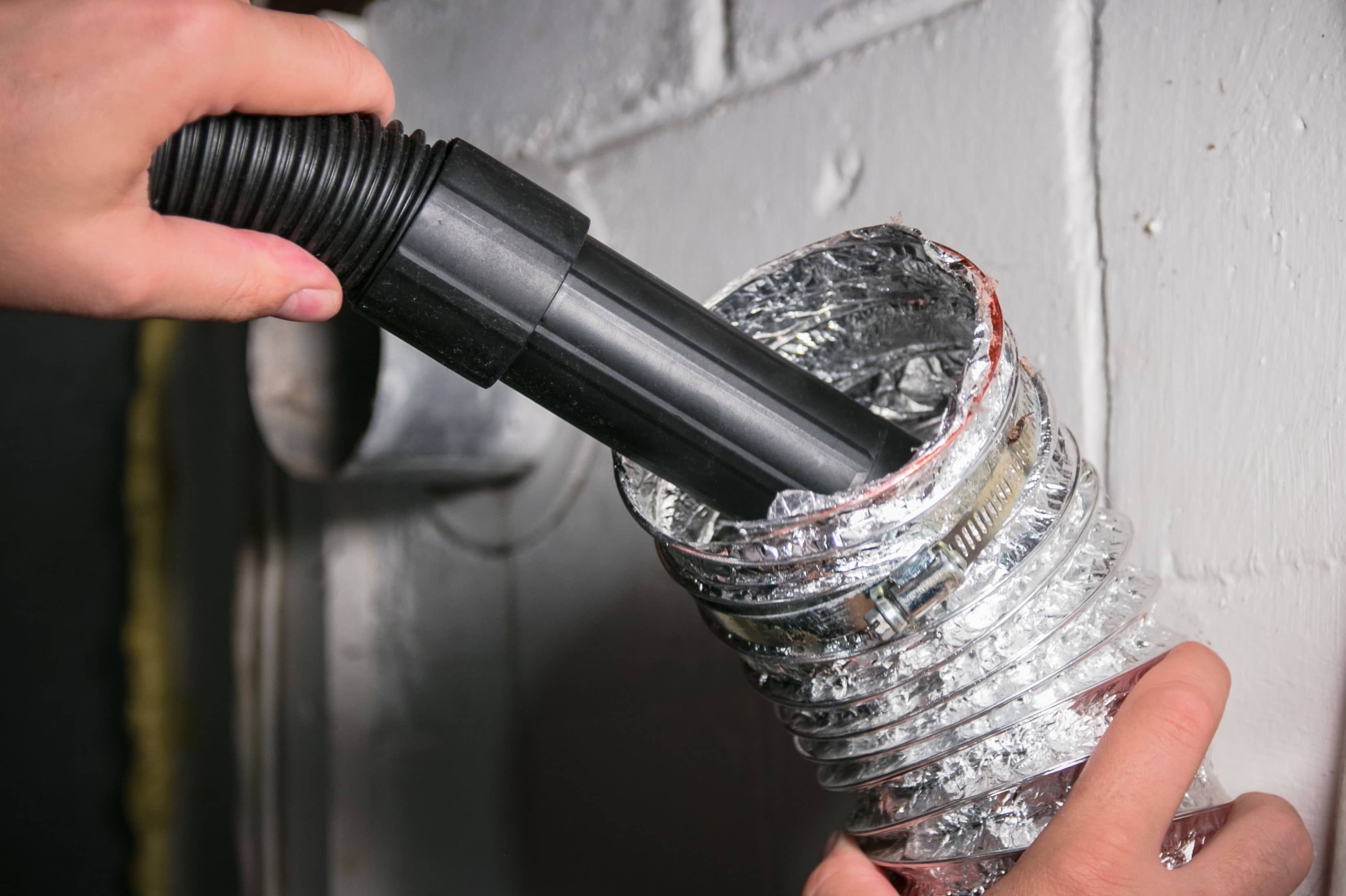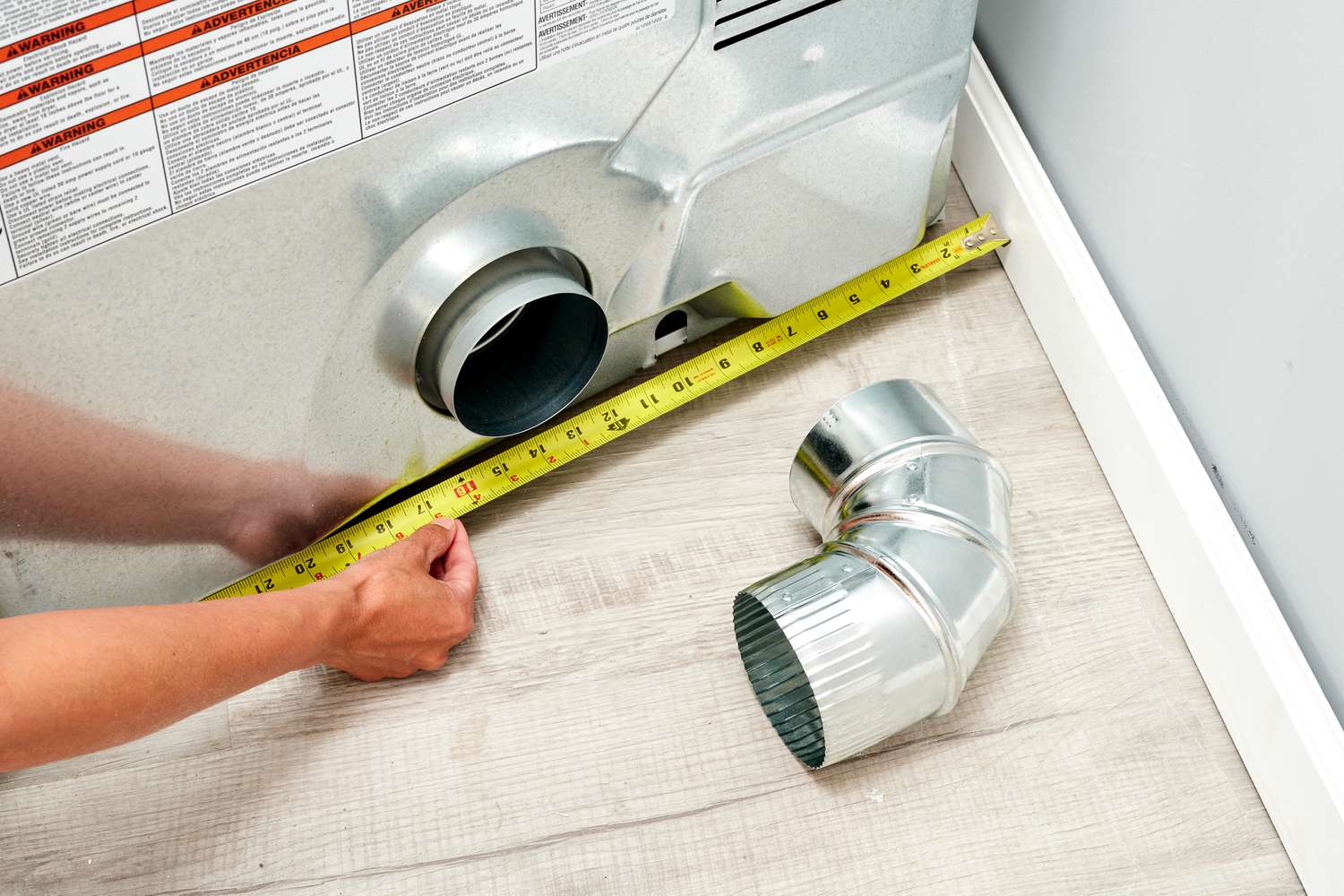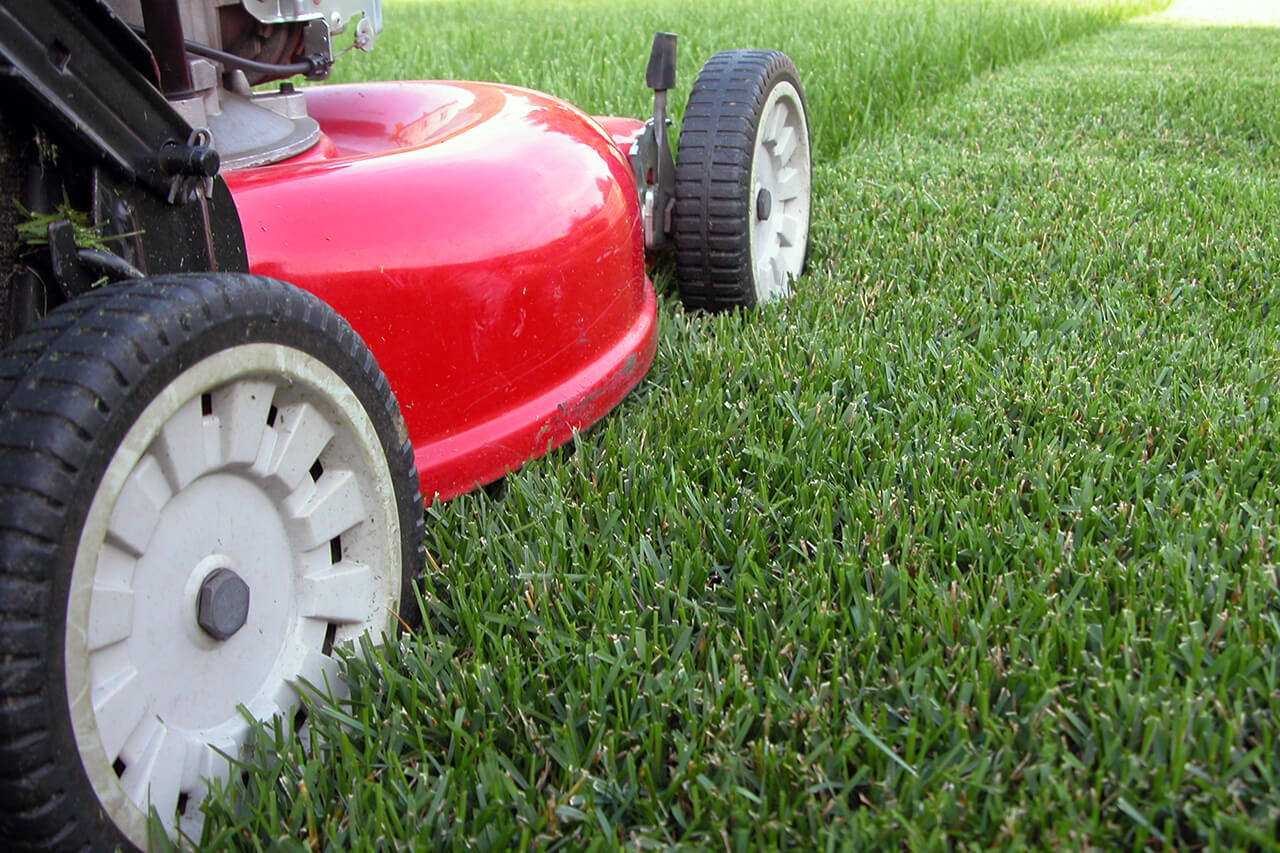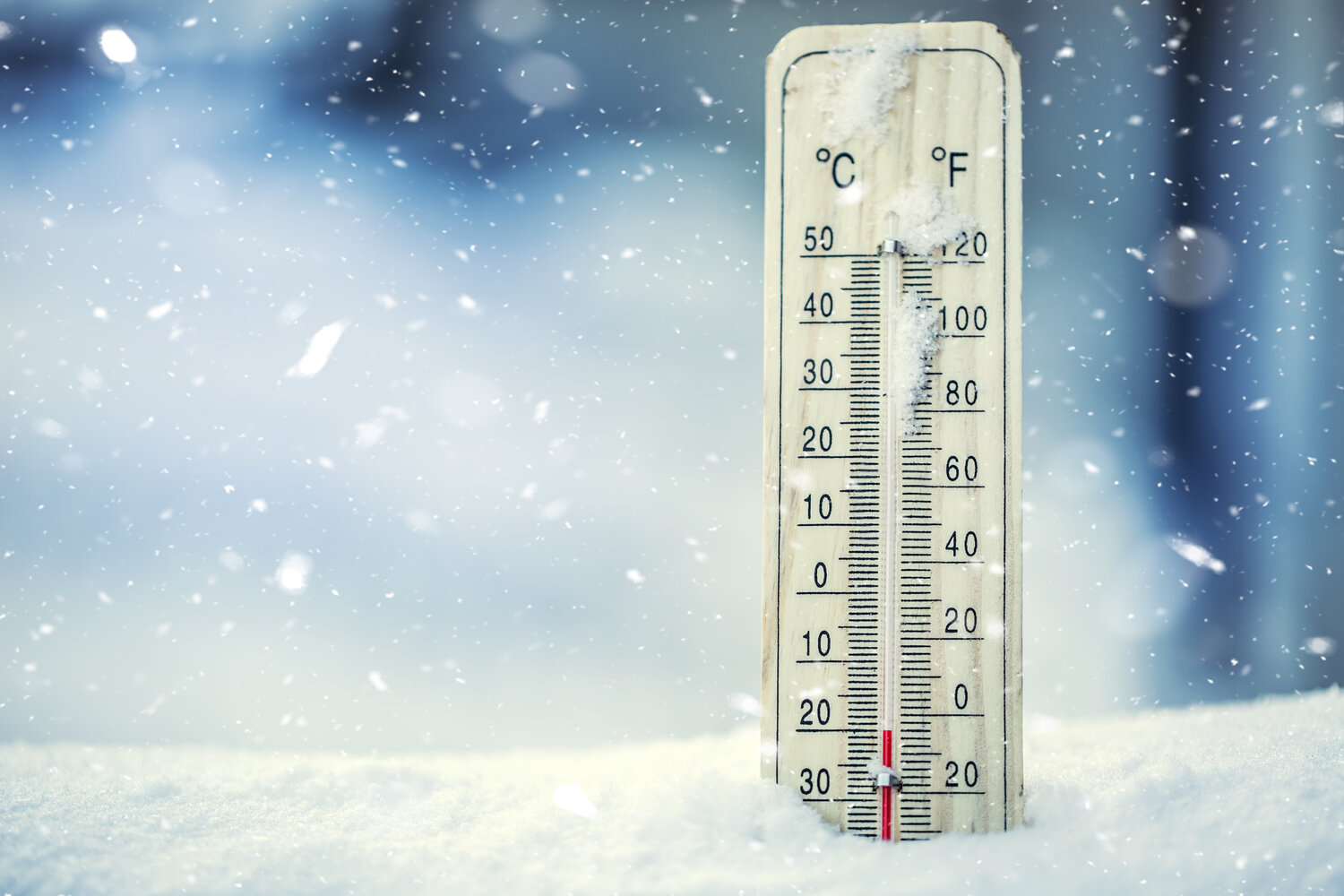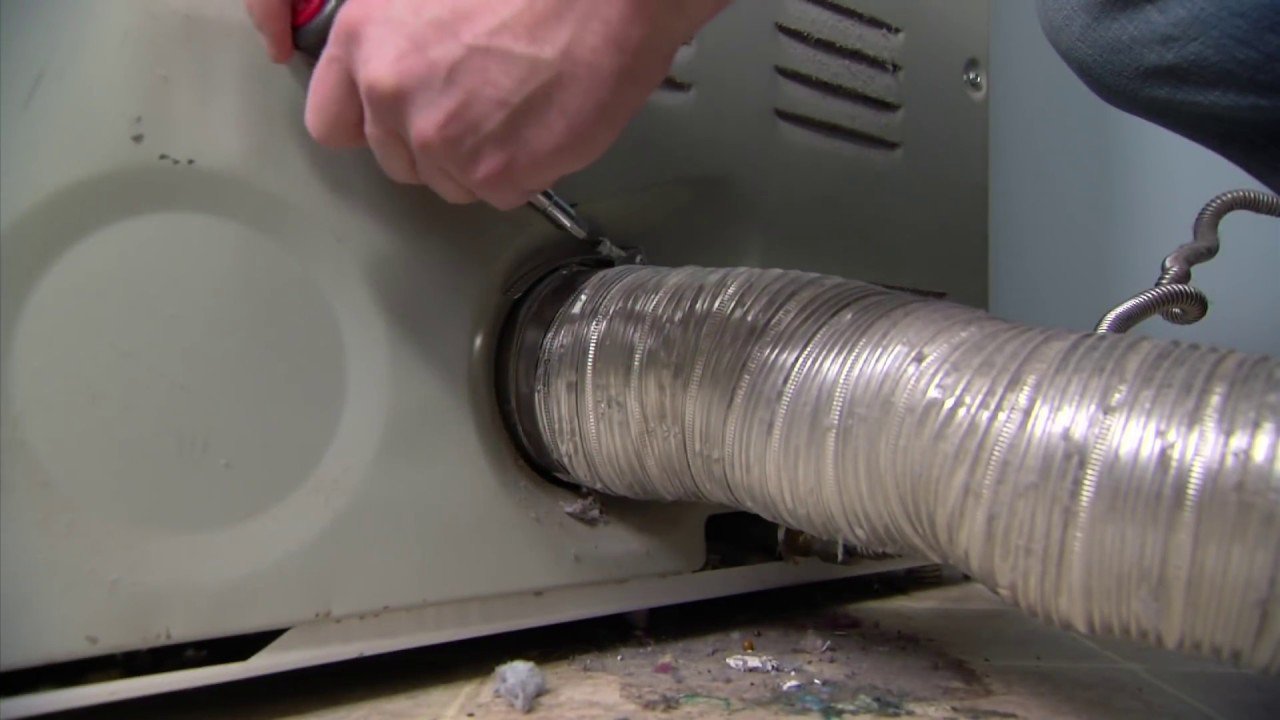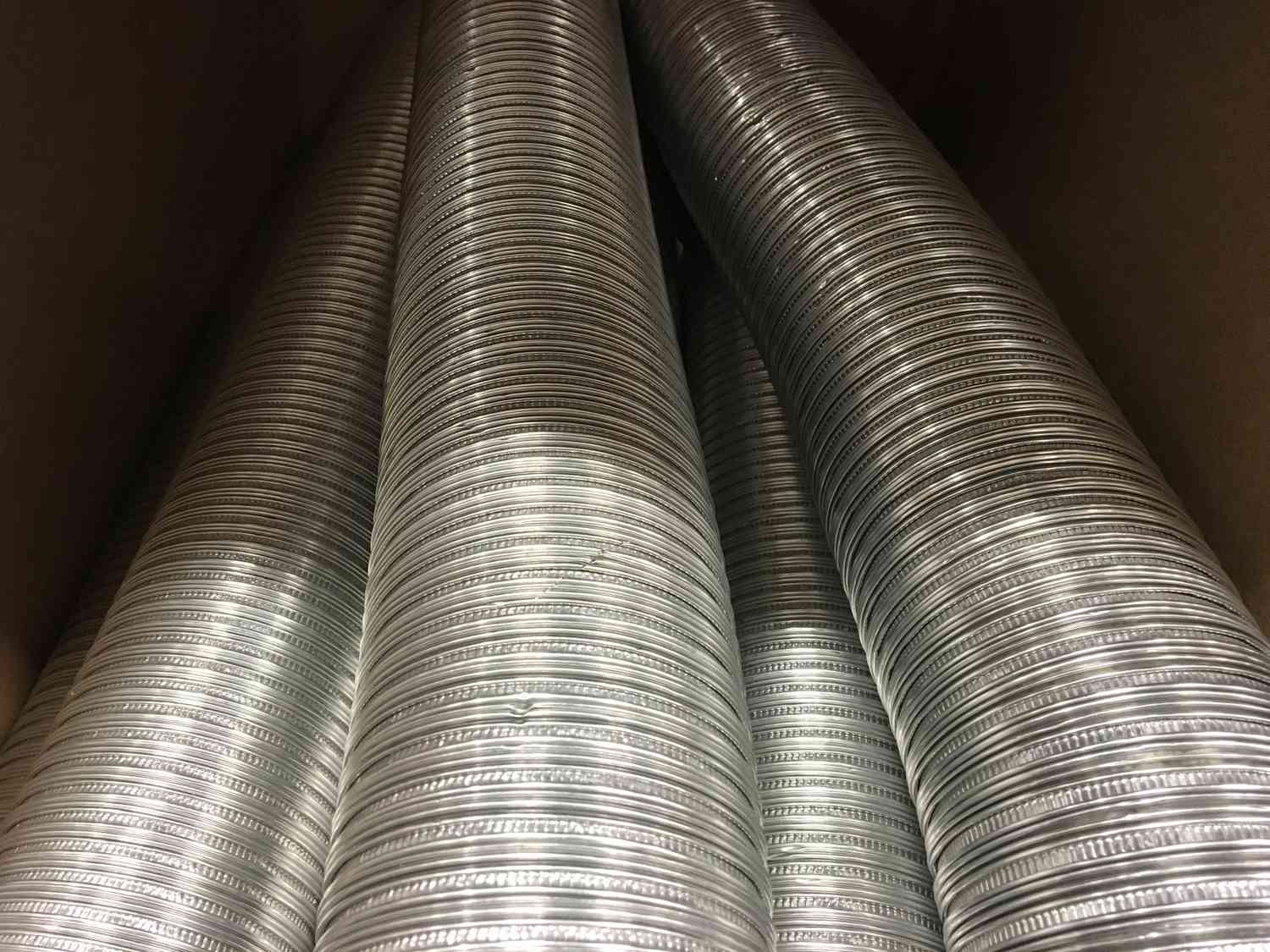Home>Home Maintenance>What Happens When A Dryer Vent Is Blocked

Home Maintenance
What Happens When A Dryer Vent Is Blocked
Modified: August 16, 2024
Discover the dangers of a blocked dryer vent and the importance of regular home maintenance. Learn how to prevent potential hazards.
(Many of the links in this article redirect to a specific reviewed product. Your purchase of these products through affiliate links helps to generate commission for Storables.com, at no extra cost. Learn more)
Introduction
Having a fully functional dryer is essential for maintaining a clean and organized home. However, many homeowners overlook the importance of proper dryer vent maintenance, leading to potential blockages that can have serious consequences. A blocked dryer vent not only affects the efficiency of your dryer, but it also poses significant safety risks.
In this article, we will examine the causes of dryer vent blockages, the signs to look out for, and the dangers that can arise from neglecting this essential home maintenance task. We will also explore the potential long-term effects of a blocked dryer vent and discuss preventive measures to ensure your dryer operates optimally and safely.
Understanding the impact of a blocked dryer vent is crucial for every homeowner. By taking the necessary steps to prevent and address blockages, you can improve your dryer’s performance, reduce the risk of fire, and extend the lifespan of your appliance.
Key Takeaways:
- Regularly cleaning your dryer vent prevents blockages, reduces fire risks, and saves energy, ensuring a safer and more efficient appliance.
- Proper vent covers deter debris and animals, maintaining clear airflow and protecting your dryer vent system from potential hazards.
Why Dryer Vents Get Blocked
There are several reasons why dryer vents can become blocked, and understanding these causes is the first step towards preventing and addressing the issue.
One common reason for a blocked dryer vent is the accumulation of lint. As clothes tumble in the dryer, they shed tiny fibers that can get caught in the vent system. Over time, this lint builds up, restricting the airflow and causing a blockage. Additionally, if the lint trap in your dryer is not cleaned regularly, it can become clogged, leading to further lint buildup in the vent.
Another common cause of dryer vent blockages is the presence of birds’ nests or other small animals. Dryer vents provide warm and cozy shelter, which can be attractive to birds and rodents. They may build nests or create obstructions in the vent, obstructing the air passage and increasing the risk of blockages.
Additionally, poorly designed or installed dryer vent systems can contribute to blockages. If the vent has too many twists and turns or is too long, it can impede the airflow and make it easier for lint and debris to get trapped. Moreover, using low-quality or inadequate vent materials can further exacerbate the likelihood of blockages.
Lastly, dryer vents that terminate near bushes, fences, or walls can also lead to blockages. As the warm air from the dryer is expelled through the vent, it can create a moisture-rich environment. If the vent is too close to an obstruction, such as foliage or a structure, it can prevent the moisture from dispersing properly and result in lint sticking to the walls of the vent.
To prevent these issues, it’s crucial to address the factors that contribute to dryer vent blockages. Regular maintenance, proper installation, and taking measures to deter birds and animals can significantly reduce the risk of blockages and ensure the efficient operation of your dryer.
Signs of a Blocked Dryer Vent
Identifying the signs of a blocked dryer vent is essential for prompt intervention and prevention of potential hazards. Here are some common signs that indicate a blockage in your dryer vent:
- Longer Drying Times: If your clothes are taking longer than usual to dry, it could be a sign of a blocked dryer vent. Restricted airflow caused by lint buildup or obstructions prevents the hot air from escaping effectively, resulting in prolonged drying times.
- Excessive Heat: Another telltale sign of a blocked dryer vent is excessive heat around the dryer while it’s running. The buildup of hot air due to restricted airflow can cause the dryer to overheat, leading to potential damage or even fire hazards.
- Frequent Overheating: If your dryer shuts off unexpectedly or frequently overheats, it may be due to a blocked vent. The lack of proper airflow causes the dryer to work harder, straining the heating element and increasing the risk of malfunctions and safety hazards.
- Burning Smell: A strong burning smell while your dryer is in use can indicate a serious problem. It could be a result of lint buildup reaching a point where it starts to burn, which poses a significant fire risk. If you notice this odor, immediately turn off the dryer and inspect the vent system.
- Visible Lint: If you notice lint accumulating around the dryer or vent area, it’s a clear indication of a blockage. Visible lint is often a sign that the vent system is not effectively capturing and venting the lint out of your home.
- Condensation and Mold: A blocked dryer vent can create excessive moisture, leading to condensation on windows or walls near the dryer. This trapped moisture can also promote the growth of mold and mildew, posing health risks to you and your family.
If you notice any of these signs, it’s important to take immediate action to address the blocked vent. Ignoring the problem can lead to reduced efficiency, increased energy consumption, and potentially dangerous situations like fires. Regularly inspecting and cleaning your dryer vent system is crucial to prevent these issues and keep your home safe.
Dangers of a Blocked Dryer Vent
A blocked dryer vent can have serious consequences, posing various dangers to both your home and your family. Understanding these risks is crucial for prioritizing regular maintenance and taking appropriate preventive measures. Here are some of the dangers associated with a blocked dryer vent:
- Risk of Fire: One of the most significant dangers of a blocked dryer vent is the increased risk of fire. Lint is highly flammable, and when it accumulates in the vent system, it becomes a potential ignition source. The heat generated by the dryer can ignite the lint, causing a fire that can quickly spread to other areas of your home. In fact, according to the U.S. Fire Administration, failure to clean dryer vents is one of the leading causes of residential fires.
- Poor Indoor Air Quality: A blocked dryer vent can lead to poor indoor air quality in your home. As lint builds up, it can trap allergens, dust, and other pollutants circulating in the air. These contaminants can then be released back into your living space, leading to respiratory issues, allergies, and other health problems.
- Carbon Monoxide Poisoning: In gas dryers, a blocked vent can lead to the buildup of carbon monoxide, a colorless and odorless gas that is extremely toxic. If the vent is obstructed, carbon monoxide can backflow into your home, putting you and your family at risk of carbon monoxide poisoning. It is vital to ensure proper venting and maintenance, especially for gas dryers.
- Damaged Dryer Components: When a dryer vent is blocked, the excessive heat and strain on the dryer can cause damage to its internal components. The heating element, thermostat, and other vital parts can overheat and malfunction, potentially leading to costly repairs or the need for a new appliance altogether.
- Inefficiency and Higher Energy Costs: A blocked dryer vent hampers the dryer’s efficiency, resulting in longer drying times and increased energy consumption. The dryer has to work harder to push air through the obstruction, wasting energy and driving up your utility bills.
Considering the potential dangers associated with a blocked dryer vent, it’s imperative to prioritize regular cleaning and maintenance. By keeping the vent system clear and free of obstructions, you can minimize these risks, improve the efficiency of your dryer, and create a safer living environment for you and your loved ones.
Increased Energy Consumption
A blocked dryer vent not only poses safety risks but also leads to increased energy consumption. When the vent is obstructed, the dryer’s efficiency is compromised, resulting in longer drying times and higher energy costs. Here’s how a blocked dryer vent can impact your energy consumption:
1. Longer Drying Times: When a vent is blocked, the hot, moist air generated by the dryer cannot escape properly. As a result, the clothes take longer to dry. This means your dryer has to run for extended periods, consuming more energy in the process. The longer drying times can significantly increase your utility bills over time.
2. Increased Heat Output: A blocked vent causes the dryer to overheat as the hot air gets trapped inside the drum. This excess heat not only risks damage to the dryer’s components but also increases energy consumption. The dryer has to work harder to maintain the desired temperature, consuming more electricity or gas in the process.
3. Inefficient Airflow: Lint buildup and obstructions in the vent restrict the airflow from the dryer. As a result, the dryer’s performance is compromised, and it requires more energy to push the air through the restricted passage. The restricted airflow decreases the overall efficiency of your dryer, causing it to consume more energy to accomplish the drying task.
4. Additional Cycles: In an attempt to dry the clothes properly, you might be tempted to run additional drying cycles if you notice damp or partially dry clothes. This not only wastes time but also significantly increases energy consumption. Instead of running extra cycles, it’s important to address the root cause of the problem: the blocked dryer vent.
Reducing energy consumption not only benefits your wallet but also the environment. By ensuring that your dryer vent is clean and free from blockages, you can improve your dryer’s efficiency and minimize its energy usage. Regular maintenance and cleaning of the vent system will help optimize airflow, promote better drying performance, and ultimately reduce your energy footprint.
Read more: What Happens If A Dryer Vent Falls Off
Reduced Drying Efficiency
A blocked dryer vent can have a significant impact on the drying efficiency of your appliance. When the vent is obstructed, it restricts the airflow, causing various issues that can affect the performance of your dryer. Here’s how a blocked dryer vent can result in reduced drying efficiency:
1. Longer Drying Times: One of the most noticeable effects of a blocked dryer vent is extended drying times. As the hot air is unable to escape efficiently, it takes longer for the moisture in the clothes to evaporate. This means you’ll need to run longer drying cycles or even repeat cycles to achieve dry clothes, wasting time and energy in the process.
2. Clothes Remain Damp or Hot: If your dryer vent is obstructed, you may find that your clothes come out of the dryer feeling damp or excessively hot. This is because the moisture is not being properly vented out, and the dryer is unable to regulate the drying temperature effectively. Inadequate airflow prevents the moisture from evaporating efficiently, resulting in improperly dried clothes.
3. Wrinkled and Damaged Clothing: A blocked dryer vent can lead to clothes wrinkling or being damaged during the drying process. Insufficient airflow prevents the dryer from tumbling clothes freely, leading to them becoming tangled and wrinkled. Additionally, the excess heat generated due to the blockage can cause fabric damage, shrinking, or even melting in extreme cases.
4. Uneven Drying: When the vent is blocked, the hot air is not evenly distributed throughout the dryer drum. This can result in some areas of the load receiving more heat than others, leading to uneven drying. You may find that some clothes are completely dry while others are still damp or moist, requiring you to separate and re-dry them.
5. Increased Wear and Tear: A blocked dryer vent places additional stress on the dryer’s internal components. The prolonged drying cycles, excessive heat, and strain on the motor and heating elements can lead to accelerated wear and tear. This can result in more frequent breakdowns and the need for costly repairs or even a replacement dryer.
Ensuring that your dryer vent is clean and clear of blockages is crucial for maintaining optimal drying efficiency. Regularly cleaning the vent, removing lint from the lint trap, and being mindful of the vent’s condition will help your dryer operate more efficiently, save time and energy, and extend the lifespan of your appliance.
Regularly check and clean your dryer vent to prevent blockages. A blocked vent can lead to longer drying times, overheating, and even a fire hazard.
Risk of Fire
A blocked dryer vent poses a significant risk of fire in your home. Lint, which is highly flammable, can accumulate in the vent system over time, creating a dangerous environment. Here’s how a blocked dryer vent increases the risk of fire:
1. Ignition Source: Lint is produced when clothes shed tiny fibers during the drying process. When the vent is blocked, this lint cannot escape and accumulates in the vent system. Over time, the buildup of lint becomes a potential ignition source. Heat generated by the dryer can cause the lint to ignite, resulting in a fire that can quickly spread to other areas of your home.
2. Restricted Airflow: A blocked vent hampers the proper airflow necessary for venting out hot air and moisture from the dryer. As a result, the dryer overheats, exposing the lint buildup to even higher temperatures. This combination of trapped heat and flammable lint poses a severe fire hazard, increasing the likelihood of a dryer-related fire.
3. Increased Heat around the Dryer: If you notice excessive heat around your dryer while it’s running, it could indicate a blocked vent. The trapped heat can cause the dryer to overheat, creating a dangerous situation. The high temperatures can ignite the lint, leading to a fire that can spread rapidly throughout your home.
4. Malfunctioning Safety Features: Dryers are equipped with safety features, such as high-temperature sensors and thermal fuses, to prevent overheating. However, these safety mechanisms may fail if the dryer vent is blocked, as they are designed to detect temperature issues caused by normal airflow. A blocked vent can create abnormal heating conditions that go undetected, bypassing these safety features and further increasing the risk of a fire.
5. Common Cause of Residential Fires: Failure to clean dryer vents is one of the leading causes of residential fires. According to the U.S. Fire Administration, an estimated 2,900 home fires are caused by clothes dryers each year, resulting in deaths, injuries, and extensive property damage. Regular maintenance and cleaning of the dryer vent system are crucial to minimize the risk of fire.
To reduce the risk of a dryer-related fire, it’s essential to keep your dryer vent clean and free from blockages. Regularly clean the lint trap, remove lint from the dryer’s interior, and ensure that the vent system is clear. Consider hiring a professional vent cleaning service if you’re unsure how to properly clean the vent. Taking these preventive measures can significantly decrease the risk of a fire and help keep your home and loved ones safe.
Increased Wear and Tear on the Dryer
A blocked dryer vent can lead to increased wear and tear on your appliance, compromising its performance and longevity. Here’s how a blocked vent can impact the overall condition of your dryer:
1. Overheating of Internal Components: When the vent is blocked, the restricted airflow prevents proper ventilation and heat dissipation. This causes the internal components of the dryer, such as the heating element and motor, to work harder and operate at higher temperatures. The excessive heat can lead to accelerated wear and tear, potentially causing these components to fail prematurely.
2. Strain on the Motor: A blocked vent can put extra strain on the dryer’s motor as it struggles to maintain proper airflow. The motor has to work harder to compensate for the lack of ventilation, potentially leading to motor burnout or breakdown. This can result in costly repairs or even the need for a replacement dryer.
3. Increased Energy Consumption: As the blocked vent hampers the dryer’s performance, it has to run for longer periods to dry the clothes adequately. This increased operating time puts additional stress on the appliance, leading to increased energy consumption. The longer drying cycles not only waste time and energy but also contribute to higher utility bills.
4. Malfunctioning Sensors and Controls: Many modern dryers are equipped with advanced sensors and controls that monitor temperature, moisture levels, and other factors to ensure optimal drying. However, when the vent is blocked, these sensors may not function properly, leading to inaccurate readings and ineffective drying cycles. The strain on the controls can also cause premature failure, requiring repairs or replacement.
5. Reduced Lifespan: Constantly operating with a blocked vent puts a significant strain on the dryer’s components, shortening its overall lifespan. The excessive heat, increased energy consumption, and strain on the motor and other internal parts can lead to more frequent breakdowns and the need for repairs. A properly maintained dryer vent system can help prolong the life of your appliance.
Regularly inspecting and cleaning your dryer vent system is crucial to prevent these issues and extend the lifespan of your dryer. By ensuring proper airflow, you reduce the strain on the appliance and minimize the risk of premature wear and tear. Additionally, scheduling regular professional maintenance can help detect any underlying issues and address them promptly, ensuring the optimal performance and longevity of your dryer.
Preventing Dryer Vent Blockages
Preventing dryer vent blockages is essential for maintaining the efficiency and safety of your appliance. By incorporating these preventive measures into your routine, you can minimize the risk of blockages and ensure the optimal performance of your dryer:
- Regular Cleaning and Maintenance: Clean the lint trap before or after each load of laundry. This simple step helps prevent excessive lint from entering the vent system. Additionally, schedule regular maintenance to inspect and clean the dryer vent ducts. A professional cleaning every 1-2 years can remove accumulated lint and debris, ensuring optimal airflow.
- Proper Installation: Ensure that your dryer vent is correctly installed. Use rigid metal ducts instead of flexible plastic or foil vents, as the latter can sag or collapse, leading to blockages. The vent should be as short and straight as possible to minimize twists and turns that can impede airflow.
- Use Proper Vent Covers: Install a proper vent cover or hood to prevent debris, pests, and birds from entering the vent system. Ensure the cover has a mesh screen to prevent the entry of small animals and nest building materials. Regularly inspect the vent cover and remove any obstructions that may accumulate over time.
- Clear the Area Around the Vent: Avoid placing objects near the exterior vent and ensure that there are no bushes, fences, or other obstructions obstructing the airflow. Trim any foliage or overgrown vegetation to maintain proper ventilation.
- Check for Proper Venting: Periodically check for proper venting by turning on the dryer and going outside to feel the airflow. If the air is not coming out strongly or there is very little airflow, it could indicate a blockage that needs to be addressed immediately.
- Empty Pockets Before Doing Laundry: Before loading your clothes into the dryer, make sure to empty pockets and check for items like tissues, coins, or small objects. These items can get caught in the lint trap or vent, potentially causing a blockage.
By following these preventive measures, you can significantly reduce the risk of dryer vent blockages. Regular cleaning, proper installation, and using the right vent covers are key to maintaining a free-flowing vent system. In addition, staying vigilant and addressing any signs of a blocked vent promptly can help prevent potential hazards and ensure the efficient and safe operation of your dryer.
Read more: What Happens If Chimney Is Blocked
Regular Cleaning and Maintenance
Regular cleaning and maintenance of your dryer vent system are fundamental to preventing blockages and ensuring the efficient and safe operation of your appliance. Here’s why regular cleaning is essential and how you can incorporate it into your home maintenance routine:
1. Removing Lint Buildup: Lint is the primary culprit behind dryer vent blockages. When clothes are being dried, they shed tiny fibers that can accumulate in the vent system over time. Regular cleaning allows you to remove this lint, preventing it from obstructing the airflow and causing potential safety hazards.
2. Ensuring Optimal Airflow: A clean vent system allows for the optimal flow of air from the dryer to the outside. By removing lint and debris, you enable the hot air and moisture to escape efficiently, resulting in improved drying performance and reduced drying times.
3. Extending Your Dryer’s Lifespan: When a dryer vent is clogged, the appliance works harder and operates at higher temperatures. This can lead to increased wear and tear on the internal components, potentially shortening its lifespan. Regular cleaning and maintenance can help prolong your dryer’s life by reducing the strain on its parts and preventing premature breakdowns.
4. Improving Energy Efficiency: A clean vent system allows your dryer to work more efficiently, resulting in reduced energy consumption. When airflow is unrestricted, the dryer can dry clothes more effectively, reducing the need for longer drying cycles and saving energy in the process.
5. Preventing Fire Hazards: Lint is highly flammable, and a blocked dryer vent significantly increases the risk of a fire. Regularly cleaning the vent system removes the combustible lint, reducing the chances of a lint fire. This simple maintenance task is crucial for protecting your home and ensuring the safety of your family.
To incorporate regular cleaning and maintenance into your routine, consider following these steps:
- Clean the Lint Trap: Before or after each load, remove lint from the lint trap. This prevents lint from entering the vent system and reduces the risk of blockages. Use a brush or your fingers to clear the lint screen thoroughly.
- Inspect and Clean the Vent Ducts: Schedule regular maintenance to inspect and clean the dryer vent ducts. If you’re not comfortable doing it yourself, consider hiring a professional vent cleaning service. They have the expertise and tools to thoroughly clean the vent system and ensure optimal airflow.
- Check for Signs of Blockages: Keep an eye out for warning signs, such as longer drying times, excessive heat, or a burning smell. If you notice any of these signs, it’s essential to inspect and clean the vent system as soon as possible.
- Set a Cleaning Schedule: Establish a routine for cleaning the lint trap and inspecting the vent system. Depending on usage, aim to clean the lint trap before or after each load and schedule a professional cleaning every 1-2 years. Mark it on your calendar as a reminder.
- Consider DIY Cleaning Kits: If you’re comfortable doing it yourself, you can purchase dryer vent cleaning kits that include brushes and extension rods. These tools allow you to clean the vent ducts from the dryer end to the exterior vent, effectively removing lint and debris.
Regular cleaning and maintenance of your dryer vent system are essential for optimal performance and safety. By incorporating these tasks into your home maintenance routine, you can prevent blockages, extend your dryer’s lifespan, save energy, and most importantly, protect your home from potential fire hazards.
Installing Proper Vent Covers
Installing proper vent covers is an important step in maintaining a clean and functional dryer vent system. Vent covers serve multiple purposes, including preventing debris, animals, and pests from entering the vent, while still allowing adequate airflow. Here’s why installing proper vent covers is essential and how you can choose and install them effectively:
1. Protecting Against Debris: A vent cover acts as a barrier, preventing leaves, twigs, and other debris from entering the vent. This helps maintain clear airflow and reduces the risk of blockages that can affect the performance of your dryer.
2. Deterrent for Animals and Birds: Birds, squirrels, and other small animals are attracted to the warmth and shelter provided by dryer vents. They may attempt to nest inside the vent, causing blockages and potential fire hazards. Proper vent covers with mesh screens can discourage animals from entering and building nests, protecting both your vent system and the creatures themselves.
3. Ensuring Adequate Ventilation: While vent covers should prevent debris and animals from entering, they should not impede the airflow. Opt for vent covers designed specifically for dryer vents, as they are equipped with built-in louvers or mesh screens that allow for proper ventilation while blocking unwanted intrusions.
4. Choosing the Right Material: When selecting vent covers, choose durable materials that can withstand weather conditions and resist corrosion. Stainless steel, aluminum, or plastic covers are commonly used and provide long-lasting protection for your vent system.
5. Proper Installation: Installing vent covers requires careful attention to ensure a tight and secure fit. Follow these steps for proper installation:
- Measure the Vent Opening: Measure the size of the vent opening to determine the appropriate size of the vent cover.
- Attach the Vent Cover: Place the vent cover over the opening, aligning it correctly. Secure it in place using screws or other fasteners provided with the cover. Make sure the cover is tightly secured but still allows for proper airflow.
- Check for Airflow: After installation, check the airflow from the vent to ensure it is not restricted. If you notice a decrease in airflow, check for any obstructions or ensure that the vent cover is properly installed and not blocking the airflow.
- Regular Maintenance: Periodically inspect the vent cover to ensure it is free from debris or damage. Clean the cover as needed to remove any buildup that may hinder airflow.
Installing proper vent covers is an essential part of maintaining a functioning dryer vent system. It helps prevent blockages, protects against debris and animals, and ensures proper ventilation. By selecting appropriate covers and following correct installation procedures, you can enjoy a clean and efficient dryer vent system that operates safely and effectively in your home.
Conclusion
Regular maintenance and care of your dryer vent system are crucial for the efficient and safe operation of your appliance. By understanding the causes and dangers of blocked dryer vents, you can take proactive measures to prevent blockages and maintain optimal performance. Whether it’s cleaning the lint trap, inspecting and cleaning the vent ducts, or installing proper vent covers, every step contributes to a well-maintained and functional dryer vent system.
Blocked dryer vents not only reduce drying efficiency and increase energy consumption but also pose serious risks, including the potential for fires and carbon monoxide buildup. By addressing these issues promptly and appropriately, you can protect your home, your family, and your appliance.
Remember to prioritize regular cleaning and maintenance of your dryer vent system. Clean the lint trap before or after each load, schedule professional vent cleanings every 1-2 years, and be on the lookout for signs of blockages. Additionally, install proper vent covers to deter debris, animals, and pests while ensuring adequate ventilation.
Taking these preventive measures will not only improve the performance of your dryer but also extend its lifespan, help you save on energy costs, and provide peace of mind knowing that you have reduced the risk of fire hazards in your home.
Don’t overlook the importance of proper dryer vent maintenance. By investing a little time and effort into caring for your dryer vent system, you can enjoy the benefits of a more efficient and safe dryer, while also preventing potential hazards and costly repairs.
Frequently Asked Questions about What Happens When A Dryer Vent Is Blocked
Was this page helpful?
At Storables.com, we guarantee accurate and reliable information. Our content, validated by Expert Board Contributors, is crafted following stringent Editorial Policies. We're committed to providing you with well-researched, expert-backed insights for all your informational needs.
